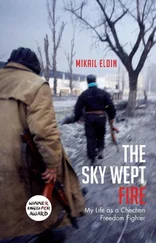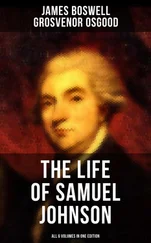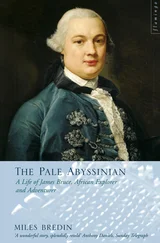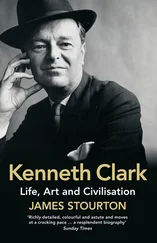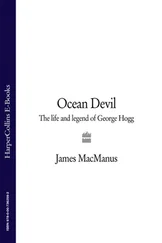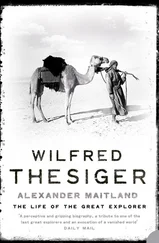The police immediately suspected that the Lafayette bar shooting was in retaliation for the Waltz Inn murder. At the Waltz Inn, a white man with a shotgun killed a black bartender. At the Lafayette bar, a black man with a shotgun killed a white bartender. An eye for an eye. The Lafayette bar slaying chilled the white establishment. Black vigilantism, of course, was unacceptable. What’s more, the bar itself had long been a tiny neighborhood hangout for the Italians, Lithuanians, Poles, and other Eastern European immigrants who lived on the southern boundary of the working-class Riverside section.
But by the summer of 1966, the neighborhood was changing quickly. Blacks, moving north along Carroll and Graham Streets, were now living near and around the Lafayette bar. But the bar was still a watering hole for its traditional base of white workers, not blacks. Indeed, rumors circulated that the bartender refused to serve blacks. In time the bar, under different owners and different names, would be a black gathering spot for a black neighborhood. But on June 17, 1966, it was seen as a white redoubt against a coming black wave.
For a city the size of Paterson, the Lafayette bar shootings—four innocent victims, including one woman, three ultimately dead—would have been jarring under any circumstance. There had been only six murders in Paterson since the beginning of the year. But the overlay of race, of black invaders and white flight and a hapless neighborhood bar with a neon Schlitz sign and threadbare pool table, elevated the tragedy further.
Frank Graves assigned 130 police officers (out of a force of 341) to the investigation, promising promotions and three-month vacations to the arresting officers. He initially offered a $1,000 reward for information that led to an arrest, then raised it to $10,000. The Paterson Tavern Owners Association chipped in another $500. That the crime occurred in a bar confirmed the mayor’s conviction that taprooms were whirlpools of disorder. “We have three hundred and fifty” taverns, Graves thundered. “We should only have a hundred.”
He repeatedly referred to the Lafayette bar murders as “the most heinous crimes” and “the most dastardly crimes in the city’s history.” Two days after the shooting, Graves told the Paterson Evening News , “We will stay on this investigation until it is solved. There will be no such thing as a dead end in this case. If we hit a roadblock, we’ll back up and get on the main road until it is solved. These are by far the most brutal slayings in the city’s history.”
The pressure to solve the worst crime in Paterson’s long history would soon lead to the most feared man in the town.
AT THE TIME of the Lafayette bar murders, Rubin Carter was a twenty-nine-year-old prizefighter and one of the great character actors of boxing’s golden era. The middleweight stalked opponents across the ring with a menacing left hook, a glowering stare, and a black bullet of a head—clean-shaven, with a sinister-looking mustache and goatee. Outside the ring, Carter cultivated a parallel reputation of a dashing but defiant night crawler. He settled grudges with his fists and was not cowed by the police. His intimidating style sent chills through boxing foes and cops alike, making him a target for both.
Regardless of where he walked, Carter always turned heads. At five feet eight inches and 160 pounds, he had an oversize neck, broad shoulders, and trapezoidal chest, with contoured biceps, thick hands, a tapering waist, and sinuous legs. A broadcaster once said of Carter, “He has muscles that he hasn’t even rippled yet.”
He was obsessed with fine clothing and personal hygiene, passions he inherited from his father. Lloyd Carter, Sr., believed that immaculate apparel showed a black man’s success in a white man’s world. A Georgia sharecropper’s son with a seventh-grade education, Lloyd earned a good living as a resourceful and indefatigable entrepreneur. He owned an icehouse, a window-washing concern, and a bike rental shop, and he wore his success proudly. He had his double-breasted suits custom-made in Philadelphia, favored French cuffs, and wore Stacy Adams two-tone alligator shoes. He bought his children shoes for school and for church; but if the school shoes had a hole, church shoes could not be worn to classes. No child of his would enter a house of worship with scuffed footwear.
Rubin Carter was just as meticulous as his father, if somewhat flashier. He instructed a Jersey City tailor to design his clothes to fit his top-heavy body. He placed $400 suit orders on the phone—“Do you have any new fabrics? … Good. Put it together and I’ll pick it up”—and he favored sharkskin suits, or cotton, silk, all pure fabrics, an occasional vest, and iridescent colors. His pants were pressed like a razor blade. He wore violet and blue berets pulled rakishly over his right ear, polished Italian shoes, and loud ties.
Carter trimmed his goatee with precision and clipped his fingernails to the cuticle. He collected fruit-scented colognes while traveling around the United States, Europe, and South Africa, then poured entire bottles into his bath water, soaked in the redolent tub, and emerged with a pleasing hint of nectar. Every three days Carter mixed Magic Shave powder with cold water and slathered it on his crown and face. He scraped it off with a butter knife, then rubbed a little Vaseline on top for a shine. His wife, Tee, complained that the pasty concoction smelled like rotten eggs, so she made him shave on their porch, but the result was Carter’s riveting signature: a smooth, shiny dome.
Nighttime was always Carter’s temptress, a lure of sybaritic pleasures and occasional danger. On his nights out, he left his wife at home and cruised through the streets of Paterson in a black Eldorado convertible with “Rubin ‘Hurricane’ Carter” emblazoned in silver letters on each of the headlights. He strolled into nightclubs with a wad of cash in his pocket and a neon chip on his shoulder. He bought everyone a round or two of drinks and mixed easily with women, both white and black. An incorrigible flirt, he danced, drank, and cruised with different women most every night.
But club confrontations often got Carter in trouble. He faced assault charges at least twice for barroom clashes, including once from the owner of the Kit Kat Club. Carter, contending he was unfairly singled out because of his swaggering profile, was cleared. But stories swirled about his hair-trigger temper. In an oft-repeated tale, Carter once found a man sitting at his table at the Nite Spot. When the man was slow to leave Hurricane’s Corner, Carter knocked him out with a punch, then took his girl.
Carter pooh-poohs such tales, although he says he would have told the man to sit elsewhere if other tables had been available. His dictum was that he never punched anyone unless first provoked, but he acknowledges that he was easily antagonized and, once aroused, showed little mercy on his tormentor. Adversaries came in all stripes. He once knocked a horse over with a right cross. The horse had had it coming: it tried to take a bite out of Carter’s side. The knockdown, publicized in local and national publications, added to Carter’s street-fighter reputation and legendary punching prowess.
Hedonistic excess was hardly uncommon in the boxing world; nonetheless, it was not widely known that Carter was an alcoholic during his career. Some thought Carter drank to make up for his dry years in prison: between 1957 and 1961, Carter had been sentenced to Trenton State Prison for assault and robbery. The inmates surreptitiously made a sugary wine concoction, “hooch,” but good liquor was hard to come by.
Outside prison, vodka was Carter’s drink of choice. Straight up, on the rocks, in a plastic cup, in a glass, from a bottle, it didn’t matter; it just had to be vodka. He was not a binge drinker but a slow, relentless sipper, and he could drink a fifth of vodka in a single night. Carter stayed clear of the bottle, mostly, when in training, but when he was out of camp, he kept at least one bottle of 100-proof Smirnoff’s in his car; friends hitching a ride got free drinks.
Читать дальше

